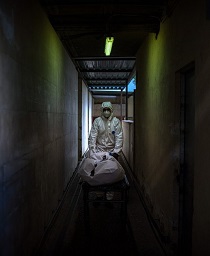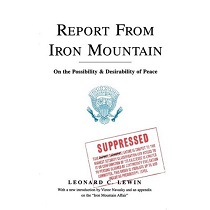Von der Leyen’s legacy
Hugo Dionísio
Strategic Culture Foundation

A European Union that has not only given up, but is using its own people. This is the legacy of Ursula von der Leyen and all those who support her.
The mainstream political class of the European Union, and its member states, has predictably ended up prolonging the agony, decadence and subservience of European affairs to U.S. interests. And now, for another five years, we will have to live, again, with Ursula von der Leyen.
Moreover, in the future, we will all remember her speeches on “value chain security”, in which Ursula’s great merit was to further reinforce the world’s dependence on Chinese value chains, demonstrating that, contrary to what she announces with as much anger as hatred, her tariffs, sanctions and conditioning cause us as much pain as they relieve the others. In the EU, in 10 years we will have given up the largest reserve of mineral, food, energy and raw materials in the world and, unless an uprising begins, we will also have given up the largest consumer market on the planet and the one that will grow the most in the coming years. These are von der Leyen’s great merits!
Given this record, you might think that the next five years would see a reversal of course. But no. Ursula von der Leyen will continue to infight against the EU’s own peoples, telling them one thing and doing the opposite, and one of the areas in which we can see, without any reservations whatsoever, that the European Union – this European Union – has given up on its indigenous peoples, is in relation to what is currently one of the main sources of social tension: immigration.
Classifying the current situation of the European labor market as being affected by serious “labor shortages”, the European Commission’s communication, entitled “Strengthening the social dialogue in the European Union: harnessing its full potential to manage just transitions”, is clear about von der Leyen’s intentions in this regard.
Don’t let that the apparently rational discourse fool you: “strengthening the social dialogue” should be read as “guaranteeing social peace in the face of measures that will further squeeze wages and living conditions”; “harnessing its full potential” should be read as “increasing the reserve army of labor to contain wage growth”; and “managing fair transitions” should be read as “ensuring that everyone will be forced to adopt the EU’s economic and social model, without reservation”.
As always, by wrapping her draconian intentions in occasional discursive flourishes, Ursula von der Leyen is making Europe poorer, less independent and more dangerous. Much more dangerous. Every time she opens her mouth, it’s best to interpret her words as having a hidden meaning, which is often the opposite of what she actually said.
On the road to increasing the exploitation of Europe’s peoples, the European Commission rightly begins by noting the demographic changes that have taken place in recent decades. Europeans are simply having fewer children. The result is that the native European working population has been shrinking and the forecast is that, today, being around 265 million workers, in 2040 this figure will be around 250 million and in 2050, 240 million. In other words, a reduction of one million per year.
Faced with a problem of this magnitude, the long-term consequences of which will not only be the reduction of native peoples, but also the emergence of vast deserted and unused areas, the perishing of certain cultures and traditions, would require an in-depth study and measures capable of reversing the trend of population decline and falling fertility and birth rates.
So, what is the European Commission proposing to solve what it identifies as serious “labor shortages”? The measures proposed by the European Union are all aimed at promoting an abrupt increase in the stock of available labor. Through what it refers to as “activation policies”, the EU wants – it says – to achieve “zero” unemployment, which is the first contradiction we can identify. So, you want to achieve “zero unemployment” while, at the same time, increasing the stock of available labor?
The truth is that the “activation policies” envisage employing young NEETs (Not in Employment, Education or Training) and assessing the impact of “some retirement pensions”, i.e. assessing the extent to which these pensions are not sending people capable of working into retirement, deactivating them instead of keeping them in the job market. This means focusing on the so-called “active ageing” market. Another measure is to identify “pockets” of available labor that may exist among disabled populations, “emancipating” these people, which would be laudable, but not when done for the wrong reasons. As we’ll see later.
Another important measure that is presented is intra-European mobility, transferring the nationally available workforce to the richer countries, leaving the rest without the investment they have made in education and training, aggravating the already unequal European division of labor, continuing to concentrate the activities with the highest added value and the highest wages in the northern countries and making the rest simple reserves of cheap labor, either to supply the richer ones or to install activities with lower added value and lower wages, perpetuating regional asymmetries. And all this, Ursula von der Leyen does, while stating the opposite objectives.
As for what the European Commission calls “promoting working conditions”, it aims to promote early entry into the labor market by promoting internships, apprenticeships and vocational education, diverting many young people, particularly the poorest, away from higher education and into early vocational training. As statistics show, young people in vocational education tend to go on to higher education far less often than those in general education. In this way, an elite is built up and entrusted with top management, keeping the rest in the middle ranks and migrants in low-skilled jobs.
But it is in solving the “labor shortages” on most undervalued activities that the EU is putting all its investment. The European economy still requires large amounts of labor for activities that use it intensively. In this case, the EU’s plans include strengthening migration policies and attracting the necessary workers from outside the EU. And this is how so many people who say they are against what they refer to as a “demographic replacement policy” end up supporting a European Union that wants to make migration policies one of its main strategic goals in attracting workers. In this way, the EU intends to establish what it calls a “European talent pool” and a “Platform for Labor Migration”. The two measures are based on attracting workers from third countries.
Now let’s compare these proposals with the following data:
■ The average unemployment rate in the European Union is around 6.5%, so there are still around 17 million workers to be placed, a significant proportion of them young workers (14.5% are unemployed) between the ages of 18 and 25. Although the EU says that it is necessary to improve the qualifications of these people and that the labor gaps are more acute in some sectors than in others, the truth is that there is still a lot to be done at home to achieve “zero unemployment” before looking for a workforce in third countries.
■ The potential for robotization, automation and digitalization of the European economy is still very high, especially in the less advanced countries, which in itself would free up huge amounts of available manpower that could be used in other sectors if this potential were to be realized.
■ In general, the European Union does not develop policies that protect the birth rate and the right to parenthood, and even less that protect women of childbearing age, who so often have to give up fertility to the detriment of a career.
So, if these tasks have not yet been accomplished, why does the European Commission want to put the elderly, young teenagers, the disabled and invalids to work? Why does it want to attract qualified and less qualified workers from abroad? The reason is clear and has to do with wage restraint. The intention is to do this by increasing the so-called ” reserve army of labor “. More available labor, more demand for work, lower wages. It’s simple. That’s not to say that wages won’t rise, but they will rise at a slower rate than the economy, leading to a loss of purchasing power and to a relative decline in living conditions.
And you don’t have to go very far to understand why the European Union is going down this road. The first answer is as clear as water: cutting off relations with the Russian Federation has made the value of raw materials more expensive, and we need to compensate for this by reducing wages, not least because the strategy is to compete with China on global markets for the same type of products.
And if we need to compensate for this loss of energy and cheap raw materials, why do we compensate with lower wages? For example, in Portugal, the Confederation of Tourism, which brings together entrepreneurs linked to tourism, has proposed a “Labor Simplex” to the government, to make it easier to hire migrant labor from third countries. In other words, European employers are proposing a policy to facilitate migration from third countries. This type of solution is also advocated by Eurobusiness, which brings together European employers.
Migration policies and the flooding of the European Union with migrant labor are policies demanded by European employers, sponsored by the political class of the neoliberal and globalist center and from the interests akin to the transnational economy, and are aimed, in the face of falling unemployment rates and the need to adopt a more rational labor management policy, at ensuring that there is still enough labor available for companies not to be forced to increase wages.
Another of the fallacies that we can identify on Ursula von der Leyen’s speech comes to light when she refers to the need to “de-risk” China because its cheap products are destroying jobs in Europe. These EU proposals show that it’s not about “protecting jobs”, but rather about profit margins and levels of accumulation that put more than 20% of the wealth produced each year in the hands of just 1% of the richest. If it were about protecting “jobs”, the policies would be different. Protectionist? Yes, perhaps. But they would essentially be aimed at protecting jobs and the quality of life of Europeans.
And this is where we catch another fallacy. In this communication, which notes the “geographical changes”, there is not a word about improving the conditions of stability in employment and in life, about access to home ownership, which would allow adults with childbearing age to settle down and start a family; instead, there is a focus on “mobility”, the mobility that forces young people to leave poorer countries for richer ones in search of better salaries, but which, in many situations, is done at the cost of postponing the intention to settle down and start a family.
Promoting a more sustainable and stable lifestyle for young people, combating job insecurity, investing in cheaper housing and support for birth and parenthood, would call into question the economic model of division of labor in the European Union. It would jeopardize the interests of the most powerful countries in attracting the most qualified workers. And that’s not to change, it’s to maintain and even worsen.
The European Union, this European Union, is thus giving up on renewing its native populations, opting for the easiest path, the one that doesn’t call into question the neoliberal, globalist and hegemonic project that it is. In this sense, we could well say that if there is a project against the family and the native peoples of the member states, it is this European project itself. But, above all, it is against all these things, because it is a project against the interests of the peoples themselves, whatever they may be.
When everyone expected that the introduction of new technologies and the consequent increase in productivity – humanity has never produced so much and with such quality in such a short time – would lead to a reduction in normal working hours, since fewer resources are needed to produce the same thing, the European Union is telling us the opposite. It’s telling us that we need more and more human labor. Even if you have to get that labor from third countries. And this is where all those who say they are being “invaded” are silent. And they keep quiet because they know that migrant workers only come because they find work, because the employers attract them in many ways. Those same interests live off the terrible conditions in which these workers arrive and live, because the greater the effort they make to cross the Mediterranean, or to find decent housing, the lower their wages will be and the more degrading the housing conditions they accept.
Those who criticize migrant workers for living in crowded houses, for filling the streets where we circulate, accusing them of taking our jobs, have never, ever seen them accuse those who attract them, who develop the policies and the economic model that legitimizes all this. I have never seen them accuse a European Union that leaves the people, all the people, behind.
A European Union that has not only given up, but is using its own people!
This is the legacy of Ursula von der Leyen and all those who support her!
____________________________________________________________________________________________
Image: © N/A; haber7com. AWIP: http://www.a-w-i-p.com/index.php/2024/07/27/von-der-leyen-s-legacy
























